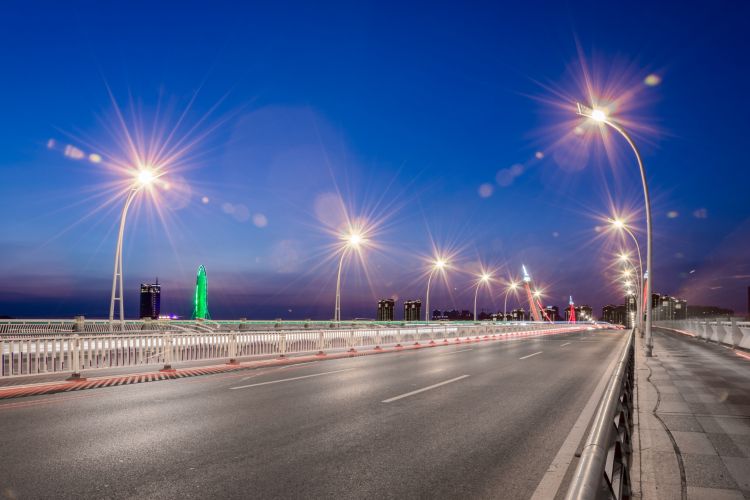

LED (Light Emitting Diode) technology has revolutionized lighting with its energy efficiency, longevity, and low heat emission. Historically, LEDs have evolved to become a superior lighting solution.
Street lighting plays a crucial role in urban infrastructure by enhancing public safety, security, and the aesthetic appeal of urban spaces, thereby supporting community well-being and nighttime economic activity.
In this article, we will discuss the cost-saving benefits of LED street lights. These benefits make LED street lights an economically and environmentally sound choice for municipalities and organizations.
Also, read this article: The Importance of Properly Installing and Wiring Outdoor Led Lighting
The Cost-Saving Benefits of LED Street Lights
Energy Efficiency
LED street lights are significantly more energy-efficient compared to traditional options like incandescent, fluorescent, and high-pressure sodium lamps.
Incandescent lights consume a lot of energy and have a short lifespan, while fluorescent lights, though more efficient, contain hazardous mercury. High-pressure sodium lamps offer better efficiency but still fall short in lifespan and light quality compared to LEDs.
LEDs drastically reduce energy consumption, using up to 75% less energy than incandescent bulbs and 50% less than fluorescent lights. This reduction leads to substantial long-term cost savings on electricity bills for municipalities.
Real-world examples from cities that have switched to LED street lights show significant financial benefits and decreased energy usage, making LEDs a superior choice for street lighting.
Longevity and Durability
LED street lights have a significantly longer lifespan compared to traditional lighting options. While incandescent lights typically last around 1,000 hours and fluorescent lights about 10,000 hours, LED street lights can last up to 50,000 hours or more.
High-pressure sodium lamps, often used in street lighting, have a lifespan of around 24,000 hours, which is still less than half the lifespan of LEDs. The extended lifespan of LED street lights results in a reduced frequency of replacements.
Traditional lights require more frequent changes due to their shorter lifespans, leading to higher maintenance demands and costs. LEDs, with their durability, need fewer replacements, which translates to less labor and resources spent on maintenance.
These factors contribute to significant cost savings from lower maintenance and replacement needs. Municipalities can allocate fewer funds and resources towards maintaining and replacing street lights, freeing up the budget for other essential services. This reduction in maintenance costs, combined with the longevity of LEDs, makes them a cost-effective choice for street lighting.
Lower Maintenance Costs
LED street lights significantly cut down on maintenance costs due to their durability and long lifespan. Unlike traditional lighting options, which need frequent repairs and replacements, LEDs require far less upkeep.
This reduced need for maintenance translates to savings on labor and repair expenses, allowing municipalities to use their budgets and resources more efficiently.
Cities such as Los Angeles and New York have experienced notable financial benefits from switching to LED street lights. The decrease in maintenance needs has led to substantial cost savings, showcasing the economic advantages of adopting LED technology for street lighting.
Environmental Benefits

LED street lights offer significant environmental benefits. They reduce the carbon footprint by consuming less energy than traditional lighting options, which leads to lower greenhouse gas emissions from power plants. This energy efficiency contributes to overall efforts in combating climate change.
Additionally, LEDs decrease light pollution due to their directional lighting, which minimizes skyglow and reduces the impact on nocturnal wildlife. Their use aligns with sustainability goals and green initiatives, supporting a more environmentally friendly approach to urban lighting.
Enhanced Safety and Performance
LED street lights enhance safety and performance in several key ways. They provide improved visibility for both pedestrians and drivers, thanks to their bright, clear, and well-distributed light. This increased visibility helps reduce the likelihood of accidents and improves overall safety on the roads.
Additionally, LED lights offer consistent and reliable performance, maintaining brightness and clarity throughout their lifespan without significant degradation. This reliability contributes to fewer accidents and enhances safety. Furthermore, the improved lighting conditions can help reduce crime rates by deterring criminal activity through better illumination, creating a safer environment for everyone.
Financial Incentives and Rebates
Government and utility companies often provide financial incentives and rebates to encourage the adoption of LED street lights. These incentives can include grants, tax credits, or reduced rates for energy-efficient upgrades, which help offset the initial costs of switching to LEDs.
Successful case studies, such as those from cities like San Diego and Chicago, illustrate how municipalities have benefitted from these programs, achieving significant cost savings and improved lighting quality.
To take advantage of available incentives, cities, and organizations should research and apply for relevant programs through local government or utility providers, ensuring they maximize the financial benefits of upgrading to LED street lighting.
Upfront Costs and ROI
The initial investment and installation costs for LED street lights can be higher compared to traditional lighting. However, this upfront expenditure is often offset by significant long-term savings due to lower energy and maintenance costs.
To calculate the return on investment (ROI), municipalities should consider both the reduced operational expenses and the extended lifespan of LEDs. This involves comparing the total costs of installation with the savings achieved over time from lower energy use and reduced maintenance.
Real-world examples, such as those from cities like Seattle and Toronto, demonstrate how the initial investment in LED street lighting is recovered through substantial long-term savings. These cities have seen impressive returns on their investments, illustrating the financial viability and benefits of switching to LED technology.
Technological Advancements and Future Trends
Recent advancements in LED street lighting include the integration of smart street lighting systems and the Internet of Things (IoT). These systems enable dynamic control of street lights, such as adjusting brightness based on traffic conditions or time of day, and can provide real-time data on maintenance needs and energy usage, further enhancing efficiency.
Innovations in LED technology continue to evolve, with improvements in light quality, energy efficiency, and design flexibility. These advancements promise even greater cost savings and performance benefits.
Looking ahead, the potential for further cost reductions and efficiency improvements is significant. As technology advances, we can expect even more refined smart systems and energy-efficient LEDs, which will enhance the effectiveness of street lighting and offer additional financial and environmental benefits.
Conclusion
LED street lighting is growing in popularity because it offers significant cost savings. LED lights are very efficient and last up to 50 times longer than traditional bulbs while using much less energy.
This results in fewer replacements, lower maintenance costs, and reduced electricity bills for cities and businesses. Additionally, LED lights improve public safety and convenience.
Despite the higher initial investment, the long-term savings and benefits of LED street lighting make it a smart choice for both cities and commercial areas.

